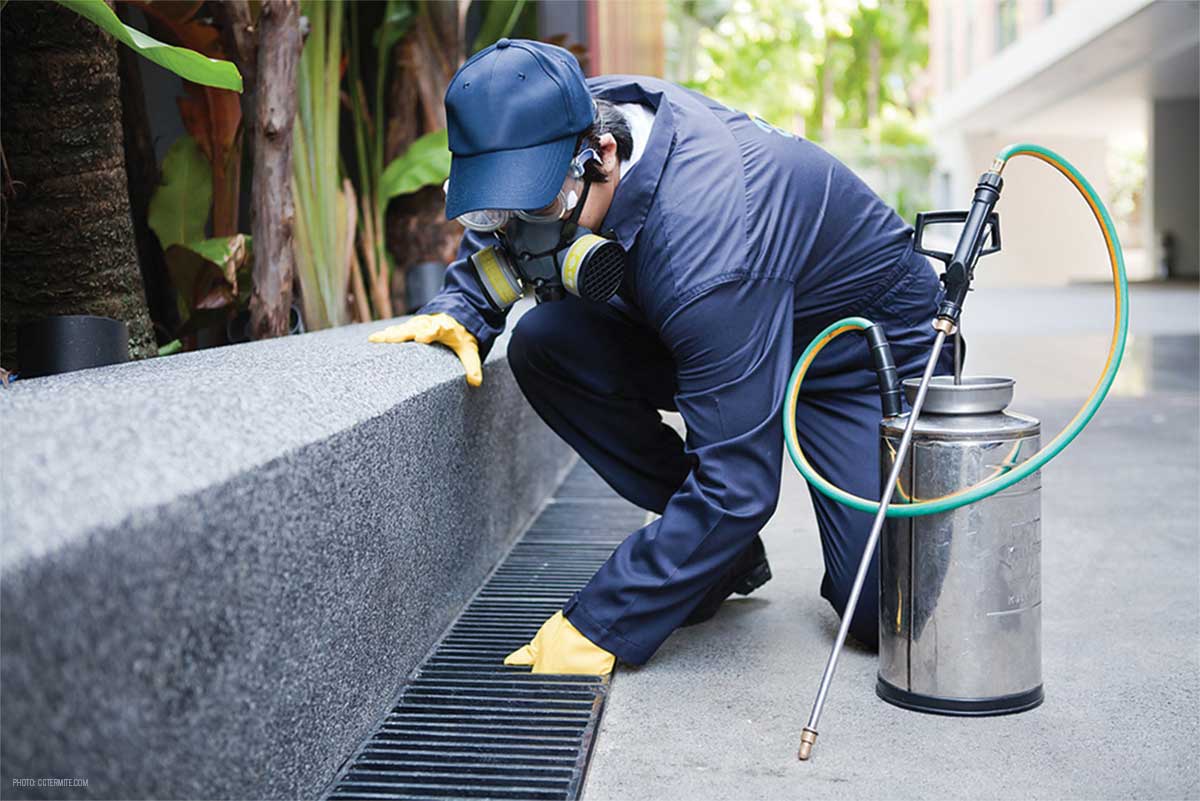A Comprehensive Guide to the Various Kinds of Parasite Control Techniques
With the myriad of pest control approaches offered, it can be overwhelming to find the most effective solution for a particular bug issue. In this extensive guide, we will check out these various kinds of bug control approaches, offering insights into their applications and benefits. By the end, you will have a more clear understanding of which technique might be the best fit for your insect control demands.
Chemical Insect Control Approaches

One common type of chemical insect control is insecticides. Insecticides target certain insects, such as insects, termites, or ants, and can be used both inside your home and outdoors.
Another sort of chemical insect control is rodenticides. These are chemical compounds created to regulate populaces of rodents, such as rats and computer mice. Rodenticides are usually used in lure form, which brings in the rodents and after that kills them after consumption. They are frequently made use of in agricultural settings, as well as in domestic and commercial buildings (Customized pest control solutions Chicago).
Weed awesomes, likewise called herbicides, are an additional kind of chemical bug control technique. Herbicides are designed to uniquely kill undesirable plants, called weeds, without creating harm to preferable plants. They are typically used in agriculture, landscaping, and horticulture to control the development of unwanted plants.
While chemical pest control methods can be very reliable in removing bugs, it is essential to utilize them sensibly and adhere to safety and security standards. Overuse or misuse of chemical pesticides can have unfavorable effect on human health and the environment. As a result, it is critical to use these techniques properly and think about different insect control methods whenever feasible.
Biological Insect Control Techniques
Organic parasite control methods include making use of living microorganisms or all-natural materials to manage and control pest populations. Unlike chemical techniques, which usually depend on synthetic pesticides, biological control techniques utilize the all-natural enemies of parasites to manage their populaces. This approach is considered more eco-friendly and sustainable, as it decreases making use of unsafe chemicals and decreases the threat of chemical resistance.
One extensively made use of organic bug control approach is the intro of natural predators or parasites. For example, ladybugs are introduced to control aphids, while certain wasp species are released to target caterpillars. These predators and bloodsuckers eat pests, lowering their numbers and stopping problems.
Another organic control method is using microorganisms. Particular microorganisms, viruses, and fungi can be utilized to contaminate and kill certain bugs. The bacterium Bacillus thuringiensis is generally utilized to control caterpillars, as it generates toxins that are dangerous to these bugs.
Biological control approaches can likewise entail making use of scents or all-natural compounds that interfere with the breeding patterns of pests. By conflicting with their reproduction, these approaches help to lower pest populations with time.
While biological pest control approaches are typically effective, they might need longer periods to attain preferred results contrasted to chemical approaches. Furthermore, mindful factor to consider must be offered to the selection and release of all-natural enemies to avoid unplanned harm to useful organisms or ecosystems.
Physical Pest Control Approaches
To properly handle and control pest populaces, alternate pest control techniques called physical bug control methods are utilized. These approaches involve the use of you can find out more physical barriers, catches, or devices to avoid parasites from accessing or damaging residential property. One common physical bug control approach is the use of displays or nets to keep pests out of structures or yards. These screens are generally made of fine mesh product that enables for air flow while preventing insects from going into. One more physical bug control technique is the installment of fencings or wall surfaces to maintain bigger insects, such as deer or rabbits, out of yards or farming areas. These obstacles literally obstruct the bugs' accessibility to the location, lowering the possibility for damages. Additionally, traps and devices can be utilized to catch or drive away pests. Sticky catches can be placed in areas where pests are a trouble, and the pests come to be stuck to the glue surface area. Ultrasonic tools can additionally be used to send out high-frequency sounds that are unpleasant to pests, causing them to leave the location. Physical bug control approaches are an environmentally friendly alternative to chemical pesticides, as they do not depend on using dangerous chemicals.
All-natural Pest Control Approaches
All-natural bug control techniques provide a sustainable and environmentally friendly method to managing and removing bugs. One of the most typical natural pest control techniques is biological control. By taking on these all-natural pest control techniques, people and areas can properly read the article take care of bugs while reducing the negative influences on the setting and human health and wellness.
Integrated Parasite Monitoring (IPM)
Integrated Insect Management (IPM) is a thorough and systematic approach to pest control that integrates different strategies and methods to efficiently handle pests while minimizing the usage of chemical pesticides. IPM intends to preserve insect populations below the economic injury degree by making use of a combination of social, organic, and chemical control approaches.
Cultural control approaches involve changing the environment to make it less beneficial for bugs. This can consist of techniques such as crop rotation, proper cleanliness, and making use of immune plant selections. By developing unfavorable conditions for pests, cultural control methods can dramatically lower pest populations.

Chemical control approaches are made look at this now use of as a last hope in IPM. They involve the targeted and judicious use of chemicals to manage bug populations. Unlike conventional insect control methods, IPM aims to reduce making use of chemical pesticides by employing different methods.
Integrated Bug Management (IPM) is an aggressive technique that concentrates on lasting insect management instead than depending only on responsive measures. By incorporating multiple control approaches, IPM gives a much more lasting and eco-friendly technique to pest control.
Conclusion
It reviewed chemical, biological, physical, and all-natural bug control methods, as well as the integrated parasite administration strategy. By understanding these different techniques, individuals can make enlightened decisions on which bug control method is most appropriate for their details requirements and choices.